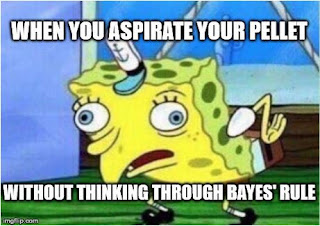Learning the language
Sometimes I think about how just a year ago, I was still in
7.013 and drawing Punnett squares. My knowledge of biology was largely
surface-level and limited to terms and definitions, and I had no real
understanding of what biological engineering actually entailed, even as I
declared my major. Today, I’m a few steps closer to my goal of being a Good Scientist
who does Good Science, but the incredible amount that I still have to learn
really helps keep me from getting too big for my britches.
In biology, there are definitely unifying principles that go
a long way towards general understanding, but there’s also staggering amount of
detail unique to every single one of more specific sub-fields. This means that every time you have to learn
about something new for your UROP, or start a new module in 20.109, you’re
basically a novice starting from the beginning again. And the process of going
from novice to somebody who actually knows what they’re talking about is not a
simple one. Here’s how that process happened for me in Mod 2, with a few
illustrative graphs.
Way back at the beginning of Mod 2, we read that paper where
they found a gene that had synthetic lethality with another gene that was
knocked out in a certain kind of cancer. I ended up spending most my time on
the introduction trying to understand what they were even saying, to say
nothing of trying to understand their actual results. Part of that was down to
the paper not being very user-friendly, but as I somehow forget every time,
that’s also just what happens when trying to learn the language of an
unfamiliar field. It tends to look something like this:
After this initial period, you move on to applications: in
this case, experiments and data analysis. New information and data come in that
have to be fit into your existing understanding of the concept. In this
intermediate phase you often find that you misunderstood a detail before, or
assumed something that wasn’t necessarily true, or it’s been a few weeks and
you’ve forgotten exactly how synthetic lethality works and what does all this R
code even mean? What is this graph saying, and how does it relate in any way to
HR and NHEJ?? At which point you have to reevaluate things a bit:
Figure 2. The initial burst of clarity fades as new information
and nuance is introduced, and some time is spent re-examining the evidence
before an updated picture emerges. This process may go through a few cycles
before true understanding is attained, and you can never really be sure how far
along the x-axis you are.
And now you’ve finished all your experiments and it’s time
to write your report. Here, you’ve entered the final stage of synthesizing your
data and the theory into a coherent story. You’ve finally become conversational
in the language, and are able to make logical leaps based on your understanding
of what’s going on in the cell and what the data are showing. Although the data are comically contradictory, you’re able to write thoughtfully about it and
hopefully put forth some interesting hypotheses. And that’s it; Mod 2 is over
and you’ve written a whole fancy-looking research article! One step further
along the path to Good Science.



Comments
Post a Comment